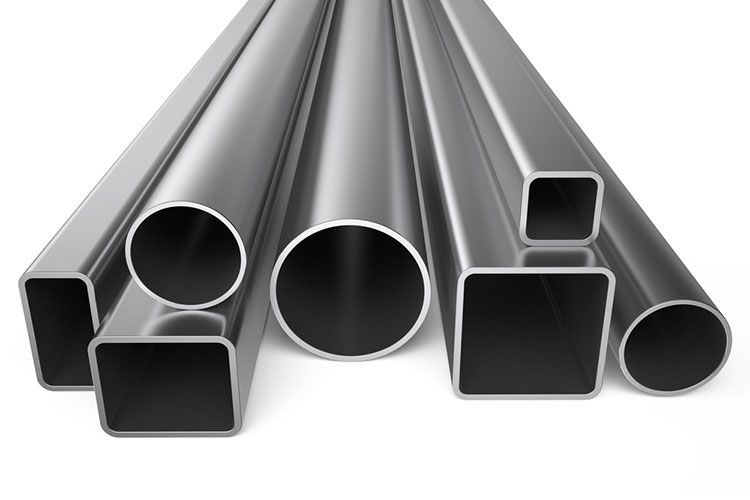In the early 20th century, British metallurgist Harry Brearley revolutionized steel production by discovering stainless steel through the addition of chromium, greatly enhancing its resistance to corrosion. Subsequently, in the 1910s and 1920s, commercial production of stainless steel began, spearheaded by companies like Krupp in Germany and Allegheny Ludlum in the USA. The significance of stainless steel surged during the 1930s and 1940s, particularly during World War II, as its exceptional strength and corrosion resistance made it invaluable for military applications. Since then, from the 1950s to the present day, stainless steel pipes have found extensive use across diverse industries including construction, automotive, aerospace, and more. Today, ongoing advancements in metallurgy and manufacturing techniques continue to propel the evolution of stainless steel pipes. Their widespread adoption and continual improvements reflect their indispensable role in modern industry and infrastructure.


How to Manufacture Stainless Steel Pipes
Stainless steel pipes are essential in various industries, known for their durability, corrosion resistance, and versatility. The manufacturing process involves several precise steps to ensure the highest quality and performance. Here’s a detailed guide on how stainless steel pipes are made.
- Melting and Casting
The first step involves melting raw materials in an electric arc furnace (EAF). Stainless steel typically consists of iron, chromium, nickel, and other alloying elements. The molten steel is then cast into semi-finished forms such as blooms, billets, or slabs. - Forming
Depending on the type of pipe being produced, the semi-finished steel is formed into the desired shape. There are two main methods:
Seamless Pipe Manufacturing: A billet is heated and pierced to create a hollow tube. The tube is then elongated and shaped through a series of rolling and stretching processes.
Welded Pipe Manufacturing: A flat sheet or strip is formed into a cylindrical shape and the edges are welded together. This can be done using different welding techniques such as Electric Resistance Welding (ERW) or Tungsten Inert Gas (TIG) welding. - Heat Treatment
Heat treatment processes, such as annealing, are performed to relieve stresses, improve ductility, and refine the grain structure. The pipes are heated to a specific temperature and then cooled at a controlled rate. - Sizing and Straightening
The pipes are then passed through sizing mills where they are brought to the exact required dimensions and straightened to ensure they meet the desired specifications. - Pickling and Passivation
To enhance corrosion resistance, the pipes undergo pickling, where they are dipped in an acid solution to remove any scale or impurities. Passivation is then carried out to form a protective oxide layer on the surface. - Testing and Inspection
Quality control is crucial in the manufacturing process. Pipes are subjected to various tests including:
Hydrostatic Testing: Checking for leaks and pressure resistance.
Ultrasonic Testing: Ensuring the integrity of the pipe wall.
Dimensional Inspection: Verifying that the pipes meet precise measurements. - Cutting and Finishing
Finally, the pipes are cut to the required lengths and undergo any additional finishing processes, such as polishing or coating, depending on the application requirements. - Packaging and Shipping
The finished pipes are then carefully packaged to prevent damage during transit and shipped to their final destination.
Stainless steel pipe offer numerous benefits across various applications, making them a preferred choice in many industries :
- Corrosion Resistance: Stainless steel is highly resistant to rust and corrosion, even in harsh environments, ensuring longevity and durability.
- Strength and Durability: These pipes can withstand high pressures and temperatures without deforming, making them suitable for demanding applications.
- Hygiene: Stainless steel’s non-porous surface makes it easy to clean and sterilize, ideal for food, beverage, and pharmaceutical industries.
- Aesthetic Appeal: Stainless steel has a modern, sleek appearance that is both functional and visually appealing.
- Low Maintenance: Their resistance to corrosion and staining reduces the need for frequent maintenance and replacements, saving time and costs.
- Versatility: Available in various grades and sizes, stainless steel pipes can be used in a wide range of applications, from construction to chemical processing.
- Environmental Friendliness: Stainless steel is recyclable, contributing to sustainability and reducing environmental impact.
Applications of Pipe Stainless
- Construction: Integral in structures and plumbing systems.
- Automotive and Aerospace: Employed in exhaust and hydraulic systems.
- Oil and Gas: Crucial for drilling, transport, and refining processes.
- Chemical and Petrochemical: Utilized in processing and storage equipment.
- Food and Beverage: Maintains hygiene and safety in production and transport.
- Pharmaceutical: Ensures sterility in manufacturing and transport.
- Marine: Resists seawater corrosion in shipbuilding and offshore rigs.
- Power Generation: Essential for piping systems in power plants.
- HVAC Systems: Provides durability in heating and cooling applications.
- Medical Industry: Safeguards sterility in medical devices and equipment.
Comparing SS 304, SS 316, and SS 202 Pipes: Which is Best for Your Needs?
Choosing the right stainless steel pipe for your application involves understanding the differences between various grades. Here’s a detailed comparison of SS 304, SS 316, and SS 202 pipes to help you make an informed decision.
SS 304 Pipes
Composition and Properties:
Chromium: 18-20%
Nickel: 8-10.5%
Corrosion Resistance: Excellent in a wide range of environments.
Strength: High tensile and yield strength.
Applications:
Widely used in kitchen equipment, chemical containers and architectural applications.
Ideal for environments exposed to moisture and mild corrosive conditions.
Pros:
Versatile and readily available.
Excellent formability and weldability.
Cons: More expensive than SS 202 due to higher nickel content.
SS 316 Pipes
Composition and Properties:
Chromium: 16-18%
Nickel: 10-14%
Molybdenum: 2-3%
Corrosion Resistance: Superior, especially against chlorides and industrial solvents.
Strength: Similar to SS 304 but with enhanced high-temperature strength.
Applications: Common in marine environments, chemical processing and medical devices.
Suitable for harsh environments with high corrosion exposure.
Pros: Exceptional resistance to pitting and crevice corrosion.
Better performance in high-saline or acidic conditions.
Cons: Higher cost compared to SS 304 and SS 202.
SS 202 Pipes
Composition and Properties:
Chromium: 17-19%
Nickel: 4-6%
Manganese: 7.5-10%
Corrosion Resistance: Good, but less than SS 304 and SS 316.
Strength: Good tensile and yield strength, though slightly less than SS 304.
Applications:
Used in kitchen utensils, automotive trims and architectural applications.
Suitable for less demanding environments.
Pros:
More affordable than SS 304 and SS 316 due to lower nickel content.
Good mechanical properties for general applications.
Cons:
Lower corrosion resistance compared to SS 304 and SS 316.
Not suitable for high-saline or highly acidic environments.
Stainless steel metal are indispensable components, guaranteeing reliability and performance in critical operations.
The best stainless steel pipe for your needs depends on the specific requirements of your application:
SS 304 Pipes – if you need a balance of corrosion resistance, strength, and affordability for general purposes.
SS 316 Pipes – if you require superior corrosion resistance, especially in harsh or marine environments.
SS 202 Pipes – if cost is a major concern and the environment is less demanding in terms of corrosion resistance.

